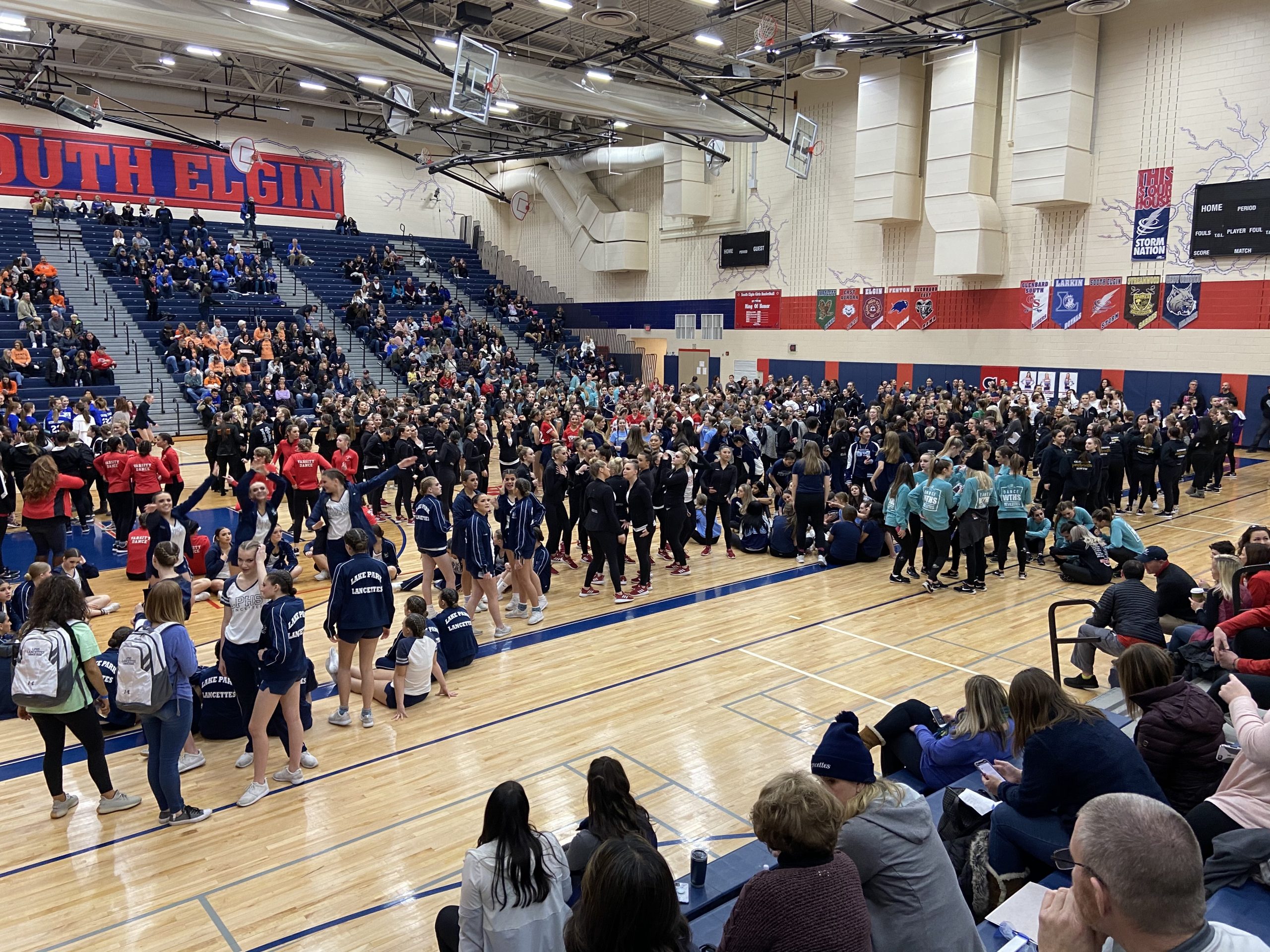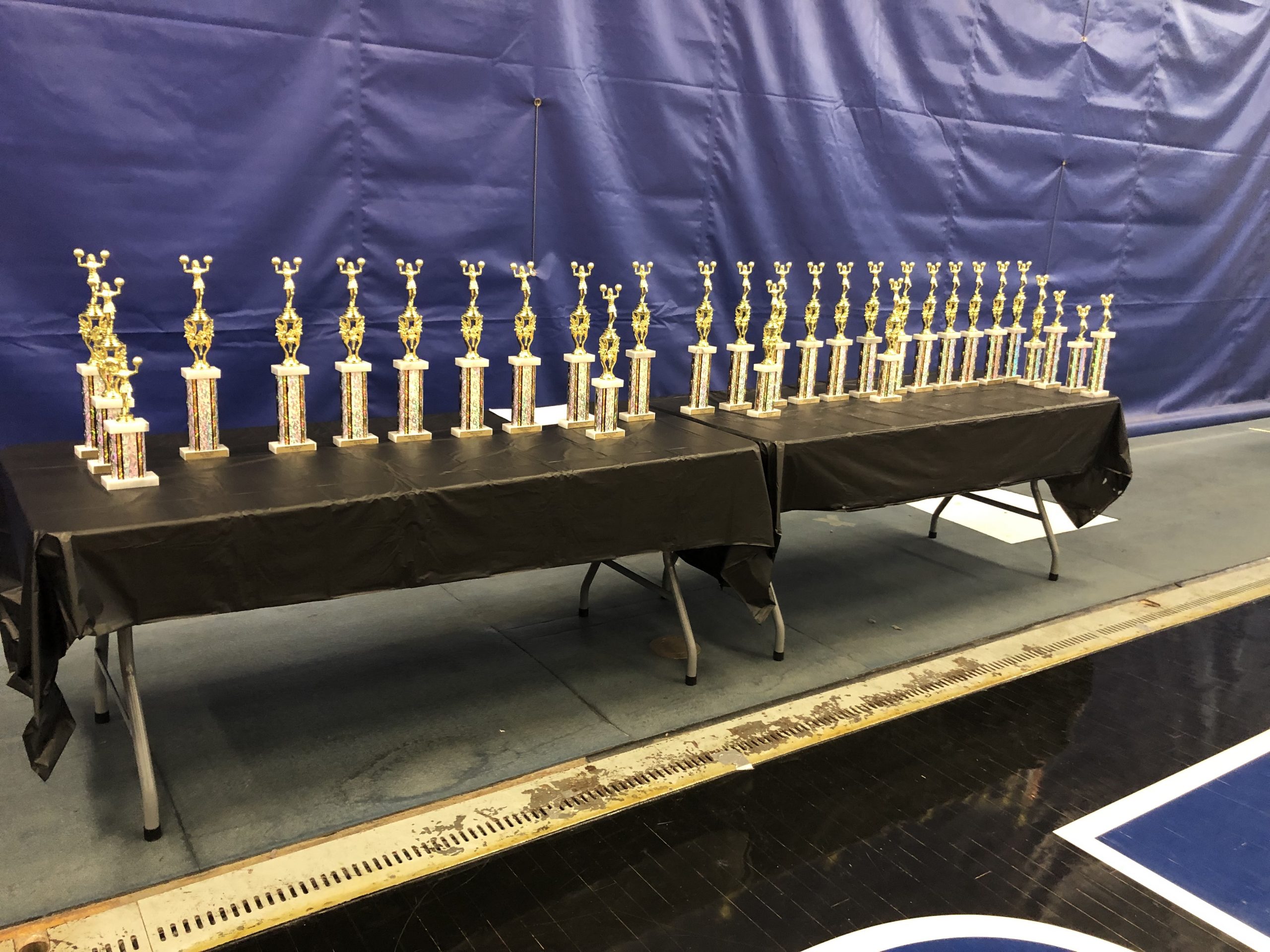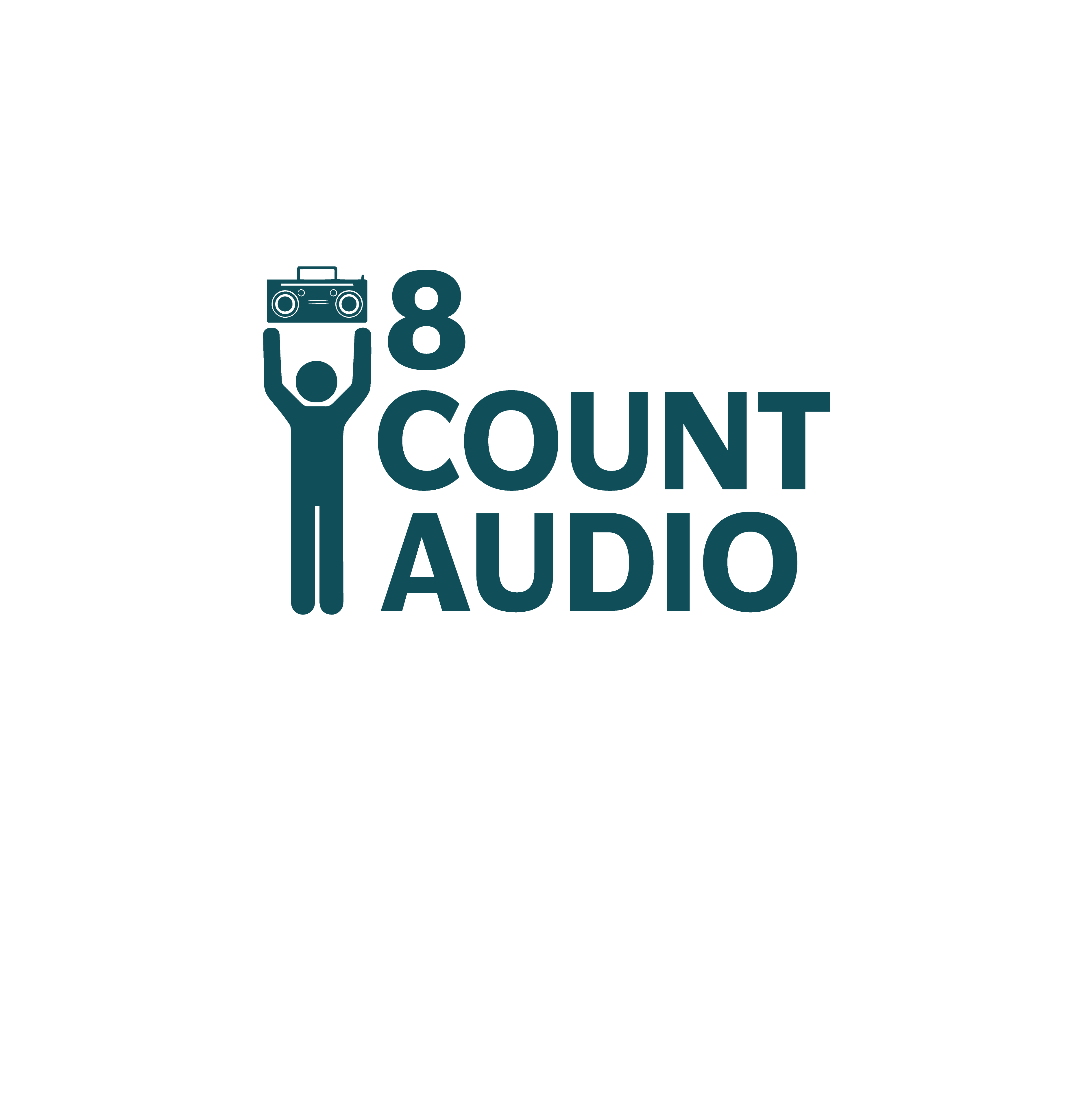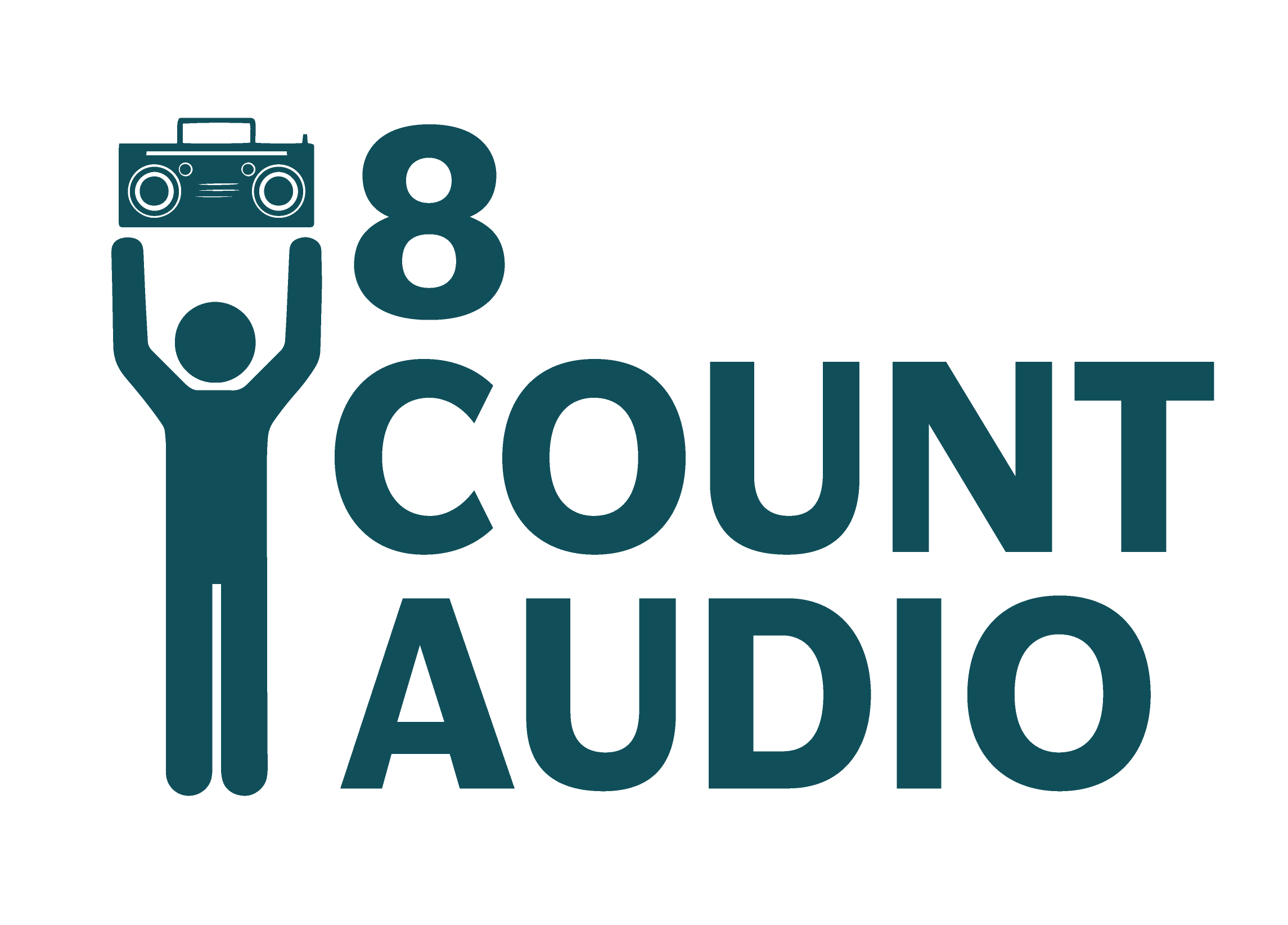
How To Mod The 2021 Winter and Spring Comp Season
by Norm Ramil, 8CA main person and dance team fan
1/26/21 8:35pm
What could a modified season look like? A boatload of stakeholders will have to figure out the details. As of this post, we don’t know what shape the competition season will take, but here are some features that would make for the best experience possible.
Competition Dates
The key dates are IHSA state, sectionals, and when competitions can start. I have these in reverse order because it’ll help to plan backwards from IHSA’s state competition.
Besides the novelty of maybe competing in March (which last happened around 2010-ish with Team Dance Illinois’ state comp in Peoria), what’s really interesting is how contest hosts might coordinate to fill the comp calendar.
Our Instagram polls showed that 74% of respondents need at least 4 competitions to be ready for sectionals, while the rest could get by with fewer times in front of judges. The dance community can probably easily spread out their competitions so that teams that want 4, 5, or 6 chances to get scores and feedback on their routines can do so. We could even run contests on weeknights (there’s some precedent for that, with South Elgin in years past and also many of the conference competitions).
And if the initial competitions are virtual (eventually shifting to in-person, and then in-person plus some fans a few weeks later), that’s even more flexibility to have a contest at any time during the week.
Which brings us to…

Competition Formats
Safety has to stay the top concern on everyone’s list. No one’s envisioning a packed gym, bleachers full, with 100 routines in the middle of April—the vaccination process will be long and uneven.
Here’s a gradual road back to normal-looking competitions:
Phase 1—virtual, as in what Minooka had planned for their early December competition.
Phase 2—in-person and live performances, but no fans.
Phase 3—in-person, live performances, fans capped at 25% of gym capacity (with a freaking ton of stage tape to mark off spots in the bleachers for social distancing).
All competitions would be streamed not just as a convenience. Anyone who’s been to our competitions knows that there are vulnerable people in the bleachers who wouldn’t do well if they caught this virus.
Small and short competitions lessen the chance of virus exposure (including less time on the bus).
If, for strategic reasons, a team needs a bigger competition where they can gauge where they rank in a big field, those early virtual competitions make a lot of sense. Then as competitions shift to in-person with small fields of teams, contest hosts can coordinate and set up their field to be made of teams who will be in the same sectional.
ADs could get creative and have their conference comps built-in to a normal competition. The conference rankings could simply be taken from conference teams’ scores.
Changes On The Floor
Dance teams face a huge challenge in modifying their choreography to meet health guidelines. Everyone will have to figure out exactly when athletes have to wear masks. During dances? Or right before and after they’re on the floor?
If routines have to feature open formations where dancers are spaced apart the entire time, it gets that much harder to hide technique errors or to stuff the weaker dancers in the back. Synchronization issues are also easier to spot.
That’s a big deal because teams and individuals are just not going to be where they’d normally be in terms of technique and polish, even if they spent the next 3 or 4 weeks practicing in beast mode before competing.
Judges will have to be ready, sharp, and open-minded. They’ll have to get used to the look of modified choreo, spotting distance infractions, and applying any new rules and penalties consistently.

Innovation and Experimentation
Major League Baseball and NASCAR were just two of the pro sports that freely tried out new rules during their modified 2020 seasons. These experimental rules didn’t have to do with safety protocols. They were all about improving the playing experience. We can do that in dance, but we also have a fantastic opportunity to test ideas that would promote more equity in the sport and solve old, old problems.
It’s only fair to mention here that 3 of the following ideas already exist in Illinois, just not in IHSA. And a lot of these ideas (true, not all of them, but many of them) can be put into effect by any contest host and aren’t specifically prohibited by IHSA. Quick example: a few IHSA comps have had category awards in the past 5 years.
Categories
OK, so I know IHSA won’t do this either this year, next year or ever. But if there was ever a time to TRY categories, it’d be right now. Pom routines are always at a disadvantage. If they can’t use sections with close formations, they’ll miss out on dynamic visuals. Why make pom routines—in a year when they’re going to score less than they already tend to—go up against jazz and lyrical dances? You can make a similar argument for hip hop routines.
Something I’ve talked about a million times bears repeating here: Illinois’ 40-plus-year-tradition of category competition continues in IDTA. If there was ever a season for your program to try new things, now’s the time. IDTA president Michelle Deets shared the easy and free process in an earlier post. Dabbling in IDTA doesn’t affect your status as an IHSA team. In fact, all IDTA comps have an IHSA category using the IHSA rubric. [Mic drop]
Audio Feedback
Our Instagram poll showed that 76% of teams needed at least 11 practices to be ready to just compete. It’s pretty clear that teams need every bit of commentary from judges to be useful and actionable as they try to polish routines with so few weeks available to practice.
So a common-sense innovation would be to do what every other organization does: give audio feedback. Live, in-the-moment comments are always going to be more instructive for teams to base their adjustments on. With so little prep time, audio feedback can help coaches while also making it easier for judges to fully share their expertise.
Anonymous Teams
A popular reform that often gets a lot of buzz is judging teams based on an entry number instead of the team’s name and reputation, something you often see in the studio competition world. Obviously there’s no way to be totally anonymous especially as we get deeper into the season, but this policy sets the right tone. If we can’t have a level playing field, we can at least make it look more even-steven. Judging by a team number is super easy for virtual video comps, and it’s worth a try for comps without fans.
Give The Regular Season More Meaning
Right now the main value of the normal competition season is to get 5 or 6 chances at judge feedback, while also seeing how you stack up against other teams. And you get to do the Cupid Shuffle at the end. Maybe haul a snazzy t-shirt, too.
It’d make, like, a mountain of common sense if you could just hit a qualifying score and that gives you a state bid. But IHSA is committed to the sectional tournament system (insert chuckle here).
So how about, just for this weird season, if a team hits a super high score, they get an automatic state bid, and that opens up one more spot at sectionals?
Another sensible reform would be offering 4 wild card spots at state based on the highest scores of the non-qualifiers that they earned during the regular season.
Or, or, or…we can either add up all your points and rank teams that way, or take each team’s average score from the entire season. Either stat could determine some extra wild card spots for state.
Or how about we take your average score from the regular season, and then rank all the teams. Teams then pick their preferred sectional time slot based on their ranking. Same for state, but based on the sectional score.
For The Seniors
We need to go the extra mile to honor our seniors. Competitions could feature an exhibition section where seniors could showcase solos or duets / small groups. Every comp, from regular ones right through state, could elect a slate of senior all-stars.
As I’ve documented in other posts this winter, innovation and creative problem-solving tends to happen at the single competition level, thanks to smart and compassionate contest hosts. Our student-athletes have been through so much, and we owe it to them to design not just a miniature, better-late-than-never season, but one that makes for the best experience possible under these extraordinary circumstances.
Coaches, judges, and contest hosts will have to juggle many factors to just make the process work. Add in a few innovations and you’ve got yourself not just a salvaged season, but a positive experience of growth.

